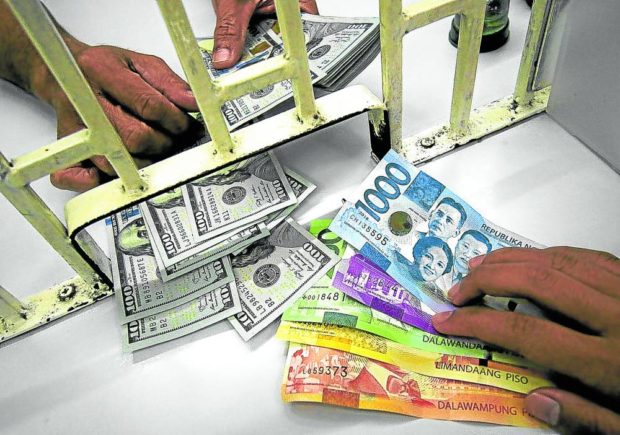Peso remains among ‘most stable’ currencies in Asia, says DOF

A customer exchanges dollars for pesos. The peso last week sank to 53 against the US dollar, its weakest in about three and a half years. —FILE PHOTO
The Department of Finance (DOF) is confident that the Philippine peso remains stable and backed by a firm economy after the local currency depreciated to 53 against the US dollar on Friday, the weakest in about three and a half years.
“Strong macroeconomic fundamentals continue to support the peso, despite external headwinds from tighter monetary policy actions by the US Federal Reserve and inflationary pressures from heightened global fuel prices,” DOF chief economist Gil Beltran said in a statement.
Beltran cited the country’s gross international reserves— the stock of foreign currency —which was pegged at $106.76 billion as of the end of last April. Such an amount is enough to cover 9.4 months’ worth of the Philippines’ import bill for goods and services.
He also cited the Philippines’ exposure to external debt, which is measured in percent to gross domestic product (GDP), being the lowest among major Southeast Asian economies.
As of the end of 2021, the country’s foreign debt-to-GDP ratio stood at 27 percent. In comparison, there was 69 percent for Malaysia, 39 percent for Thailand, and 35 percent for Indonesia. Vietnam has a projected ratio of 39 percent.
Also, Beltran said the peso continued to be in “the middle of the pack of the most stable currencies” in Asia, ranking 8th among 11 Asian currencies in terms of strength.
The peso depreciated by 5.4 percent to 50.77 to the US dollar at the end of 2021 from 48.04:$1 at end-2020. At the same time, three currencies —including the Japanese yen, Thai baht, and South Korean won—depreciated faster.
“In 2022 [so far], the peso was one of the strongest Asian currencies, ranking second only to the Vietnamese dong,” Beltran said. INQ
